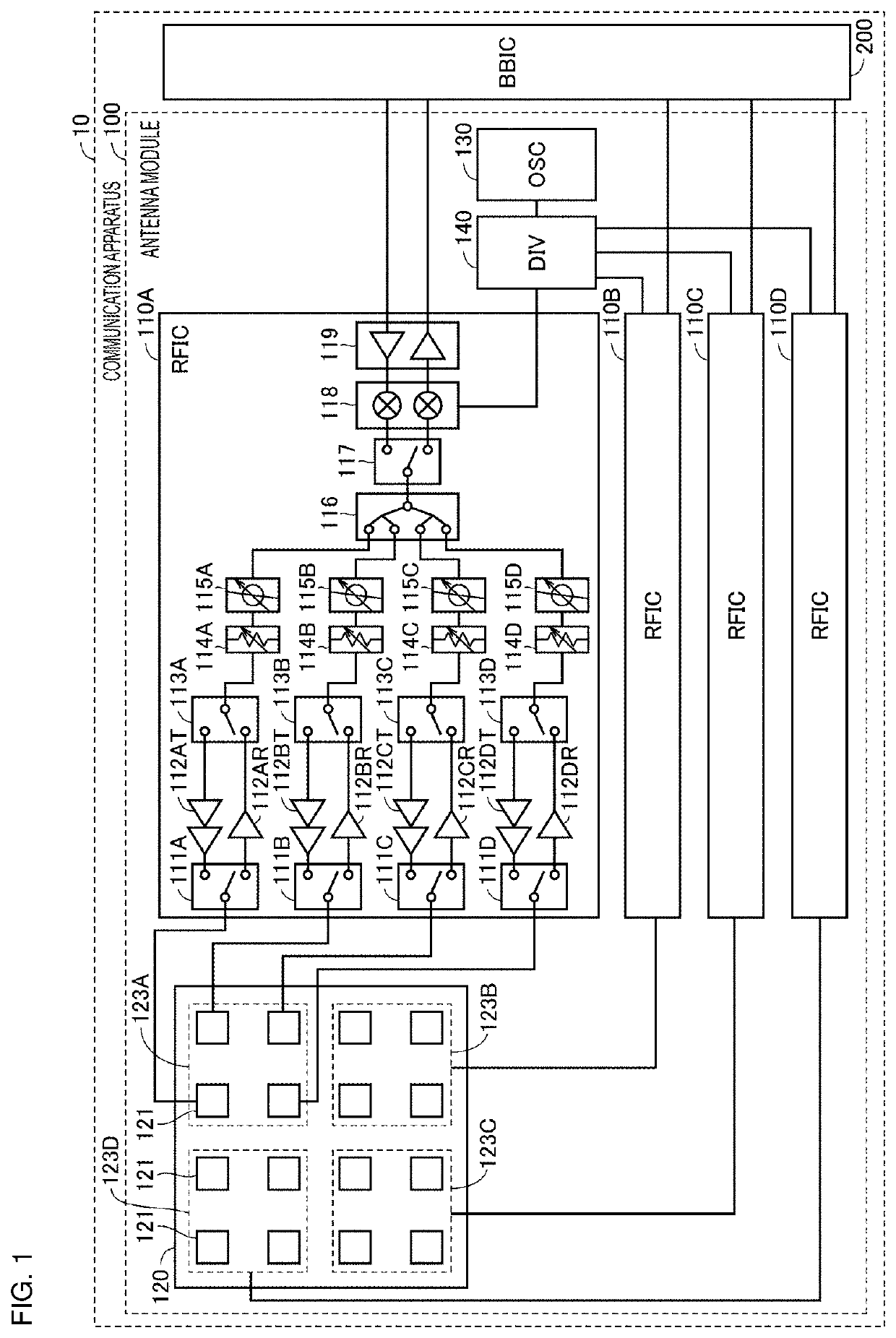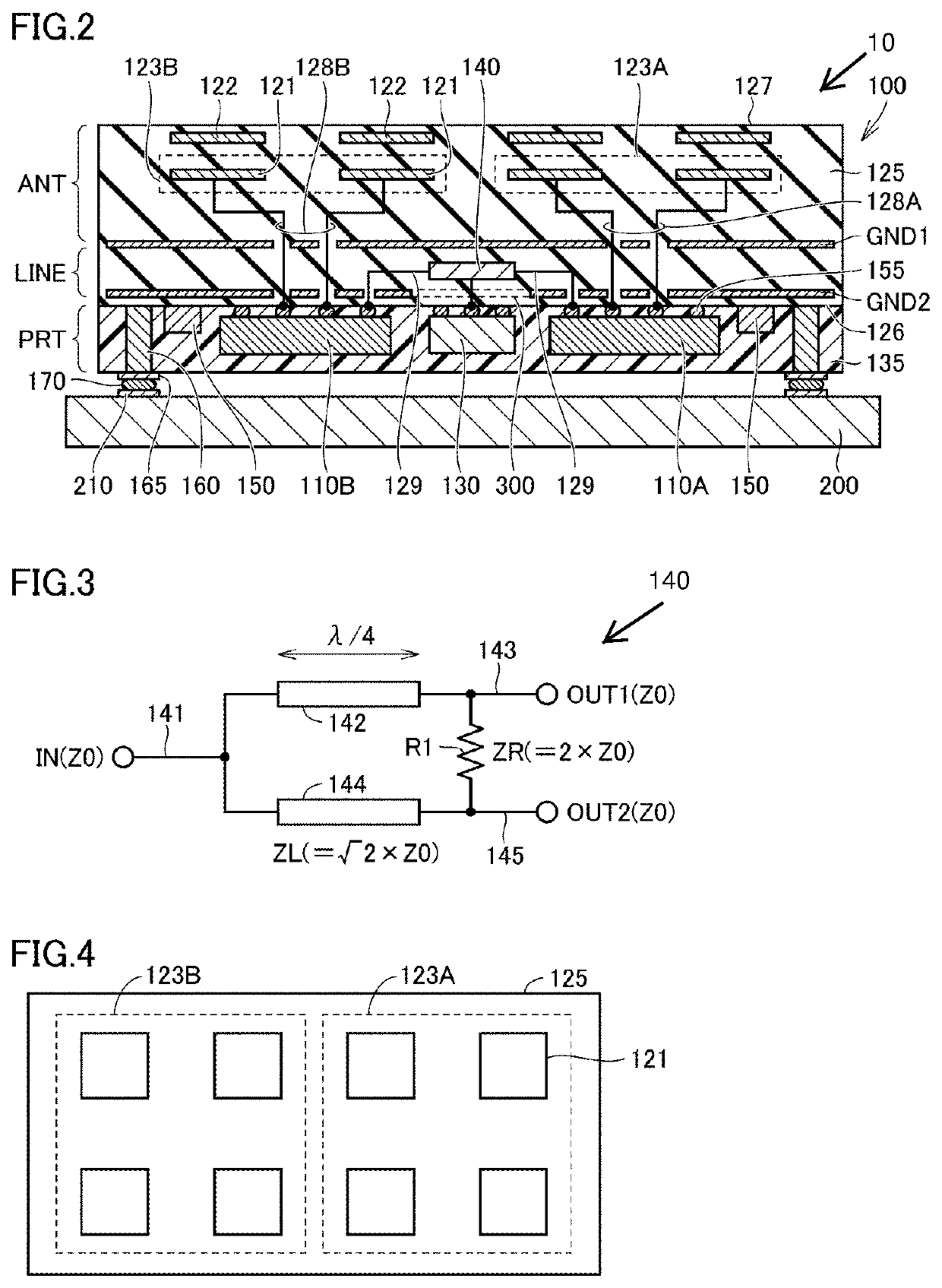Antenna module
a technology of antenna modules and antenna arrays, applied in the field of antenna modules, can solve the problems of increased communication traffic in wireless networks, increased capacitance components of dividers, and consequently degraded communication speeds and communication quality, so as to reduce parasitic capacitance, achieve the desired impedance, and increase the path
- Summary
- Abstract
- Description
- Claims
- Application Information
AI Technical Summary
Benefits of technology
Problems solved by technology
Method used
Image
Examples
Embodiment Construction
[0038]Hereinafter, an embodiment of the present disclosure is described in detail with reference to the drawings. In the drawings, identical or corresponding portions are assigned identical reference characters, and descriptions thereof are not repeated.
[0039](Basic Configuration of Communication Apparatus)
[0040]FIG. 1 is a block diagram of a communication apparatus 10 in which an antenna module 100 according to the present embodiment is used. Examples of the communication apparatus 10 include portable terminals such as a mobile phone, a smartphone, and a tablet computer, and a personal computer having communication functionality.
[0041]Referring to FIG. 1, the communication apparatus 10 includes the antenna module 100 and a BBIC 200 forming a baseband-signal processing circuit. The antenna module 100 includes a plurality of radio frequency integrated circuits (RFICs) 110A to 110D, an antenna array 120, an oscillator (OSC) 130, and a divider (DIV) 140. In the communication apparatus ...
PUM
 Login to View More
Login to View More Abstract
Description
Claims
Application Information
 Login to View More
Login to View More - R&D
- Intellectual Property
- Life Sciences
- Materials
- Tech Scout
- Unparalleled Data Quality
- Higher Quality Content
- 60% Fewer Hallucinations
Browse by: Latest US Patents, China's latest patents, Technical Efficacy Thesaurus, Application Domain, Technology Topic, Popular Technical Reports.
© 2025 PatSnap. All rights reserved.Legal|Privacy policy|Modern Slavery Act Transparency Statement|Sitemap|About US| Contact US: help@patsnap.com



